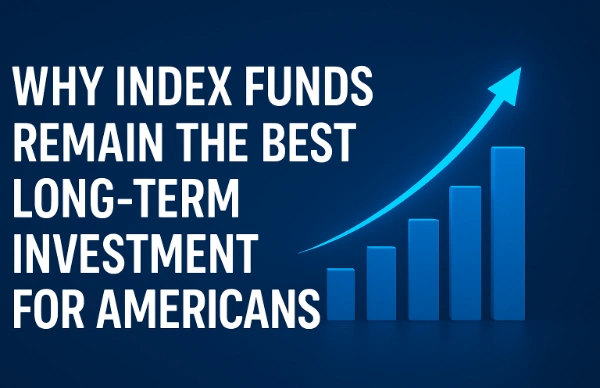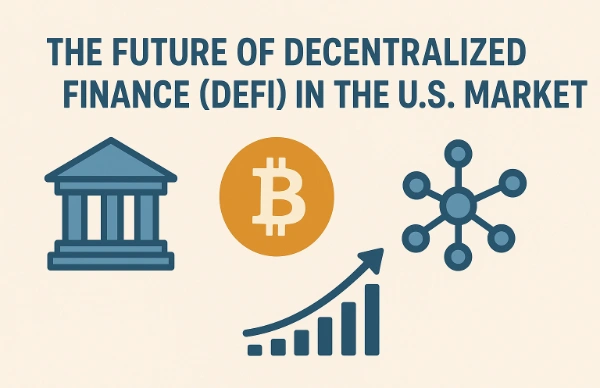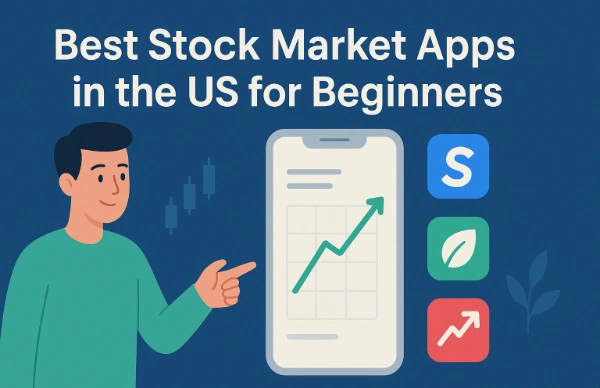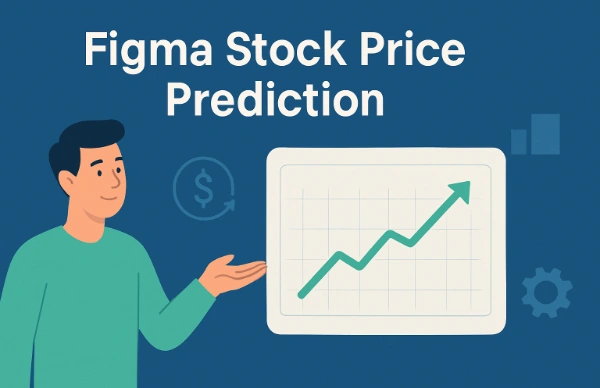Introduction to Index Fund Investing
When it comes to building long-term wealth, Americans have countless investment options at their disposal. From individual stocks and bonds to real estate and cryptocurrency, the choices can feel overwhelming. However, one investment strategy has consistently proven itself as the most reliable path to financial success: investing in index funds.
Index funds have become the cornerstone of smart investing for millions of Americans, and for good reason. These investment vehicles offer unparalleled simplicity, cost-effectiveness, and long-term performance that has outpaced the majority of actively managed funds over decades.
Investing in index funds isn’t just a trend—it’s a time-tested strategy that legendary investors like Warren Buffett have championed for years. In fact, Buffett has repeatedly stated that for the average American investor, low-cost index funds represent the best way to build wealth over time.
This comprehensive guide will explore why index funds remain the optimal choice for long-term investing, providing you with the knowledge and confidence to make informed decisions about your financial future.”Why Index Funds Remain the Best Long-Term Investment for Americans”
Table of Contents
What Are Index Funds and How Do They Work?
Index funds are a type of mutual fund or exchange-traded fund (ETF) designed to track the performance of a specific market index, such as the S&P 500, Total Stock Market Index, or NASDAQ-100. Rather than trying to beat the market, index funds aim to match its performance by holding the same securities in the same proportions as the target index.
The Mechanics of Index Fund Investing
When you invest in an index fund, your money is pooled with thousands of other investors to purchase a diversified portfolio of stocks or bonds that mirror the chosen index. This passive investment approach eliminates the need for fund managers to make frequent trading decisions, resulting in lower costs and more predictable returns.
Investing in index funds means you’re essentially buying a small piece of every company in that index. For example, when you purchase shares of an S&P 500 index fund, you own a tiny fraction of all 500 companies in the index, from tech giants like Apple and Microsoft to healthcare leaders like Johnson & Johnson.
Also read: How Blockchain Is Disrupting the American Banking System
Types of Index Funds Available to Americans
The index fund landscape offers numerous options for American investors:
Total Stock Market Index Funds: These funds track the entire U.S. stock market, providing exposure to large, medium, and small-cap companies.
S&P 500 Index Funds: Focused on the 500 largest U.S. companies, these funds represent approximately 80% of the total U.S. stock market value.
International Index Funds: These provide exposure to foreign markets, allowing investors to diversify beyond U.S. borders.
Bond Index Funds: Track various bond indices, offering stability and income generation for conservative investors.
Sector-Specific Index Funds: Target specific industries like technology, healthcare, or energy for investors seeking targeted exposure.
The Historical Performance Advantage
The track record of index funds speaks volumes about their effectiveness as long-term investment vehicles. Historical data consistently demonstrates that investing in index funds has outperformed the majority of actively managed funds over extended periods.
S&P 500 Performance Over Decades
The S&P 500, one of the most popular indices for American investors, has delivered remarkable long-term returns. Over the past 30 years, the S&P 500 has averaged approximately 10% annual returns, despite experiencing multiple market crashes, recessions, and periods of volatility.
During the 1990s technology boom, the 2008 financial crisis, and the COVID-19 pandemic, index funds tracking the S&P 500 demonstrated their resilience by recovering and reaching new heights. This consistent performance has made investing in S&P 500 index funds one of the most reliable wealth-building strategies for Americans.
Also read: Top U.S. Blockchain Companies to Watch in 2025
The Compound Growth Effect
One of the most powerful aspects of index fund investing is the effect of compound growth over time. When you reinvest dividends and allow your returns to generate their own returns, the growth becomes exponential rather than linear.
Consider this example: An American investor who contributed $500 monthly to an S&P 500 index fund starting in 1993 would have invested $186,000 over 31 years. However, thanks to compound growth and consistent market performance, that investment would be worth over $1.2 million today.
Consistency Across Market Cycles
Investing in index funds provides consistency that individual stock picking or market timing strategies simply cannot match. While active fund managers may occasionally outperform the market in specific years, maintaining that outperformance over decades has proven nearly impossible.
Research by Standard & Poor’s consistently shows that over 15-year periods, more than 90% of actively managed large-cap funds underperform the S&P 500 index. This statistic alone makes a compelling case for index fund investing.
Cost Efficiency: Why Low Fees Matter
One of the most significant advantages of investing in index funds is their remarkably low cost structure. Understanding how fees impact your long-term returns is crucial for maximizing your investment success.
Expense Ratios Explained
The expense ratio represents the annual fee charged by a fund, expressed as a percentage of your investment. While this might seem like a small detail, the difference between high and low fees compounds dramatically over time.
Top-performing index funds typically charge expense ratios between 0.03% and 0.20%, while actively managed funds often charge 0.50% to 2.00% or more. This difference might seem minimal, but it has profound implications for long-term wealth building.
The Real Cost of High Fees
Let’s examine how fees impact a typical American investor. Assume you invest $10,000 annually for 30 years with an 8% average return:
- Low-cost index fund (0.05% expense ratio): Final value approximately $1,132,000
- High-cost active fund (1.00% expense ratio): Final value approximately $975,000
- Difference: $157,000 lost to higher fees
This example illustrates why investing in low-cost index funds is so powerful. Those seemingly small fee differences can cost you hundreds of thousands of dollars over a lifetime of investing.
No Load Fees or Transaction Costs
Most major index funds also eliminate load fees (sales charges) and minimize transaction costs. This means more of your money goes to work immediately, rather than being eaten up by fees and commissions.
When you’re investing in index funds through discount brokers like Vanguard, Fidelity, or Charles Schwab, you can often trade these funds with zero transaction fees, further enhancing your returns.
Diversification Benefits
Diversification is a fundamental principle of smart investing, and index funds provide instant diversification that would be impossible for individual investors to achieve cost-effectively on their own.
Automatic Portfolio Diversification
When you’re investing in a broad market index fund, you’re automatically diversifying across:
- Industries: Technology, healthcare, finance, consumer goods, energy, and more
- Company sizes: Large-cap, mid-cap, and small-cap companies
- Geographic regions: Domestic and international exposure (depending on the fund)
- Investment styles: Growth and value stocks in their natural market proportions
This diversification helps protect your portfolio from the failure of any single company or industry downturn.
Risk Reduction Through Broad Exposure
Individual stocks can lose 50%, 70%, or even 100% of their value due to company-specific problems. However, investing in index funds spreads this risk across hundreds or thousands of companies, making it virtually impossible for your entire investment to be wiped out by any single event.
The 2008 financial crisis provides an excellent example. While many individual financial stocks lost 80-90% of their value, the S&P 500 index fell approximately 57% at its worst point and fully recovered within a few years.
Also read:Top US Cryptocurrency Exchanges in 2025: Which One Is Best?
Sector Rotation Benefits
Markets naturally go through cycles where different sectors outperform at different times. Technology might lead during one period, while energy or healthcare might dominate during another. Investing in broad index funds ensures you participate in whichever sectors are driving market growth, without having to predict which sectors will perform best.
Tax Advantages of Index Fund Investing

Tax efficiency is another compelling reason why investing in index funds makes sense for American investors, particularly those investing in taxable accounts.
Lower Turnover Equals Lower Taxes
Index funds typically have very low portfolio turnover because they only buy and sell securities when the underlying index changes. This passive approach results in fewer taxable events compared to actively managed funds that frequently trade securities.
Lower turnover means:
- Fewer capital gains distributions
- More control over when you realize gains
- Better tax efficiency for your overall portfolio
Tax-Loss Harvesting Opportunities
Many index fund providers offer tax-loss harvesting services, which can help offset gains in other parts of your portfolio. This strategy involves selling losing investments to offset taxes on winning investments, potentially saving thousands in taxes annually.
Qualified Dividend Income
Most dividends from index funds tracking U.S. indices qualify for favorable tax treatment, being taxed at capital gains rates rather than ordinary income rates. For many Americans, this means paying 15% or 20% tax on dividends instead of their regular income tax rate, which could be as high as 37%.
Comparing Index Funds vs. Active Funds
The debate between passive index investing and active fund management has raged for decades, but the evidence overwhelmingly favors investing in index funds for most American investors.
Performance Comparison Over Time
The SPIVA (S&P Indices Versus Active) reports consistently show that the majority of actively managed funds fail to outperform their benchmark indices over long periods:
- Over 10 years: Approximately 85% of large-cap active funds underperform the S&P 500
- Over 15 years: More than 90% of active funds underperform their benchmarks
- Over 20 years: The percentage rises even higher
The Persistence Problem
Even when active funds do outperform in a given year, studies show that this outperformance rarely persists. Yesterday’s winning fund manager often becomes tomorrow’s underperformer, making it nearly impossible for investors to consistently pick winning active funds.
Investing in index funds eliminates this guesswork entirely. You don’t need to research fund managers, analyze investment strategies, or worry about style drift. The index fund will deliver market returns, which historically have been quite generous to patient investors.
Manager Risk Elimination
Active funds face the risk of key personnel changes. When a star fund manager leaves, the fund’s performance often suffers. Index funds face no such risk because they follow a systematic approach that doesn’t depend on individual decision-making.
How to Choose the Right Index Funds
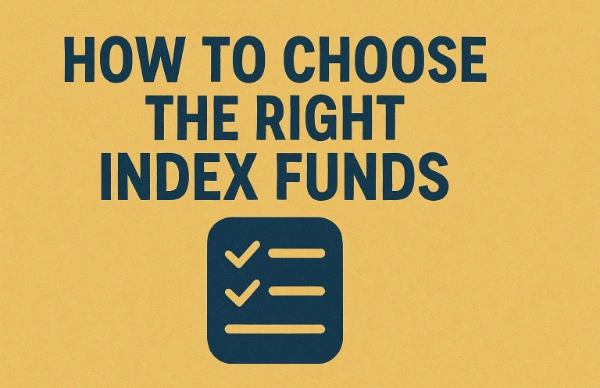
While investing in index funds is straightforward, selecting the right funds for your portfolio requires some consideration of your goals, timeline, and risk tolerance.
Core Holdings for American Investors
Total Stock Market Index Funds: These should form the foundation of most American portfolios, providing broad exposure to the entire U.S. stock market.
S&P 500 Index Funds: An excellent alternative to total market funds, focusing on large-cap companies that drive much of the market’s performance.
International Developed Markets: Adding international exposure helps diversify beyond U.S. markets and can improve risk-adjusted returns.
Emerging Markets Index Funds: For investors seeking higher growth potential, emerging market funds can provide exposure to faster-growing economies.
Bond Index Funds for Stability
Investing in bond index funds adds stability and income to your portfolio. Consider:
Total Bond Market Index Funds: Provide broad exposure to U.S. investment-grade bonds.
International Bond Funds: Add currency diversification and exposure to foreign government and corporate bonds.
TIPS (Treasury Inflation-Protected Securities): Help protect against inflation risk.
Fund Selection Criteria
When choosing specific index funds, focus on:
- Expense Ratio: Lower is always better
- Tracking Error: How closely the fund follows its index
- Fund Size: Larger funds often have lower costs and better liquidity
- Provider Reputation: Stick with established companies like Vanguard, Fidelity, and Schwab
Building Your Index Fund Portfolio

Creating an effective index fund portfolio doesn’t require complex strategies or constant monitoring. The key is finding the right asset allocation for your age, risk tolerance, and investment timeline.
Age-Based Asset Allocation
A common rule of thumb suggests holding your age in bonds and the remainder in stocks. For example, a 30-year-old might hold 30% bonds and 70% stocks, while a 60-year-old might prefer 60% bonds and 40% stocks.
However, with Americans living longer and retirement periods extending, many financial advisors now recommend more aggressive allocations, such as:
- 20s and 30s: 90% stocks, 10% bonds
- 40s: 80% stocks, 20% bonds
- 50s: 70% stocks, 30% bonds
- 60s and beyond: 60% stocks, 40% bonds
The Three-Fund Portfolio
Many successful investors build their entire portfolio around just three index funds:
- Total Stock Market Index (60-70%): Provides broad U.S. market exposure
- International Stock Index (20-30%): Adds geographic diversification
- Total Bond Market Index (10-40%): Provides stability and income
This simple approach to investing in index funds has proven incredibly effective for building long-term wealth while minimizing complexity and costs.
Dollar-Cost Averaging Strategy
Rather than trying to time the market, successful index fund investors employ dollar-cost averaging—investing a fixed amount regularly regardless of market conditions. This strategy:
- Reduces the impact of market volatility
- Eliminates the need to time market entry points
- Builds disciplined investing habits
- Takes advantage of market downturns by buying more shares when prices are low
Common Mistakes to Avoid When Investing in Index Funds {#common-mistakes}
While index fund investing is relatively straightforward, there are several common pitfalls that can derail your success.
Mistake #1: Trying to Time the Market
Many investors make the mistake of waiting for the “perfect” time to start investing in index funds. They might wait for a market crash or try to predict economic cycles. Historical data shows that time in the market beats timing the market consistently.
The best time to start investing was yesterday; the second-best time is today. Markets tend to rise over long periods, and waiting for the perfect entry point often means missing out on years of potential growth.
Mistake #2: Checking Your Portfolio Too Frequently
Index fund investing requires patience and discipline. Checking your portfolio daily or even weekly can lead to emotional decision-making that hurts long-term returns. Successful index fund investors often check their portfolios quarterly or even less frequently.
Mistake #3: Chasing Performance
Some investors make the mistake of switching between different index funds based on recent performance. They might move from a total market fund to a technology fund after tech stocks have a great year, only to miss out when tech underperforms.
Investing in broad market index funds and staying the course delivers better results than constantly chasing the latest hot sector or trend.
Mistake #4: Inadequate Emergency Fund
Before investing in index funds, ensure you have an adequate emergency fund in a high-yield savings account. This prevents you from having to sell investments during market downturns to cover unexpected expenses.
Index Fund Performance Comparison Table {#performance-table}
| Fund Type | 10-Year Annual Return | Expense Ratio | Minimum Investment | Best For |
|---|---|---|---|---|
| S&P 500 Index | 12.1% | 0.03-0.05% | $0-$3,000 | Core portfolio holding |
| Total Stock Market | 11.8% | 0.03-0.04% | $0-$3,000 | Complete U.S. exposure |
| International Developed | 7.2% | 0.05-0.11% | $0-$3,000 | Geographic diversification |
| Emerging Markets | 4.1% | 0.11-0.25% | $0-$3,000 | Higher growth potential |
| Total Bond Market | 2.8% | 0.03-0.05% | $0-$3,000 | Stability and income |
| REIT Index | 9.1% | 0.12-0.25% | $0-$3,000 | Real estate exposure |
Returns are approximate and based on historical averages. Past performance doesn’t guarantee future results.
Advanced Strategies for Index Fund Investing
Tax-Advantaged Account Prioritization
Smart Americans maximize their index fund investing by prioritizing tax-advantaged accounts:
401(k) Plans: Take full advantage of employer matching—it’s free money. Many 401(k) plans now offer excellent low-cost index fund options.
IRA Accounts: Both traditional and Roth IRAs allow for tax-efficient index fund investing. Roth IRAs are particularly powerful for young investors.
HSA Accounts: Often overlooked, Health Savings Accounts can serve as powerful retirement investment vehicles when used properly.
Rebalancing Your Index Fund Portfolio
While investing in index funds is largely passive, periodic rebalancing ensures your portfolio maintains your desired asset allocation. Most successful investors rebalance annually or when their allocation drifts more than 5% from their target.
Rebalancing forces you to sell high and buy low, as you’ll be selling portions of funds that have outperformed and buying more of funds that have underperformed.
Geographic and Currency Diversification
American investors shouldn’t limit themselves to domestic index funds. Investing in international index funds provides several benefits:
- Currency diversification: Reduces the impact of dollar fluctuations
- Geographic risk reduction: Protects against U.S.-specific economic problems
- Access to growth markets: Emerging markets often grow faster than developed economies
- Valuation opportunities: International markets may offer better valuations at different times
The Psychology of Successful Index Fund Investing
Embracing Market Volatility
Successful index fund investors understand that volatility is the price of admission for long-term returns. Rather than fearing market downturns, experienced investors view them as opportunities to purchase more shares at discounted prices.
Investing in index funds during market crashes has historically been incredibly rewarding. Those who continued investing during the 2008 financial crisis, the 2020 COVID crash, or other market downturns were handsomely rewarded for their patience and discipline.
The Importance of Staying the Course
The biggest enemy of successful investing isn’t market crashes or economic recessions—it’s human emotion. Fear and greed cause investors to buy high and sell low, destroying their long-term returns.
Index fund investing helps combat these emotional biases by removing the temptation to constantly trade or make tactical decisions. The passive nature of index funds encourages long-term thinking and disciplined investing habits.
Building Wealth Gradually
Investing in index funds isn’t a get-rich-quick scheme, but it is a get-rich-slowly strategy that actually works. The combination of broad diversification, low costs, and consistent contributions over time has created more millionaires than any other investment strategy available to average Americans.
Index Fund Investing for Different Life Stages
Young Professionals (20s and 30s)
Young Americans have the luxury of time, allowing them to take more aggressive approaches to investing in index funds:
- High stock allocation: 90-100% stocks for maximum growth
- Focus on growth: Emphasize total stock market or S&P 500 funds
- Maximize contributions: Take advantage of compound growth by investing as much as possible early
- Ignore short-term volatility: With decades until retirement, short-term market movements are irrelevant
Mid-Career Investors (40s and 50s)
As Americans enter their peak earning years, investing in index funds becomes more sophisticated:
- Balanced approach: 70-80% stocks, 20-30% bonds
- International exposure: Add international index funds for diversification
- Increase contributions: Higher incomes allow for larger investment amounts
- Begin considering bonds: Start adding stability as retirement approaches
Pre-Retirement and Retirement (60+)
Older Americans need to balance growth with capital preservation when investing in index funds:
- Conservative allocation: 50-70% stocks, 30-50% bonds
- Income focus: Emphasize dividend-paying index funds and bond funds
- Gradual shifting: Slowly move toward more conservative allocations
- Maintain some growth: Keep enough stock exposure to combat inflation
The Role of Index Funds in Financial Independence
Many Americans pursuing Financial Independence, Retire Early (FIRE) strategies rely heavily on index fund investing. The FIRE movement demonstrates how aggressive saving combined with low-cost index fund investing can accelerate the path to financial freedom.
The 4% Rule and Index Funds
The famous 4% withdrawal rule, which suggests you can safely withdraw 4% of your portfolio annually in retirement, is based largely on historical index fund performance. This rule assumes a portfolio of approximately 60% stocks and 40% bonds, typically achieved through index fund investing.
Geographic Arbitrage and Index Funds
Some Americans pursuing financial independence use geographic arbitrage—earning U.S. salaries while living in lower-cost countries. Investing in U.S. index funds allows these individuals to maintain exposure to the American economy while enjoying lower living costs abroad.
Index Fund Investing During Economic Uncertainty
Recent economic events have tested investor resolve, but they’ve also reinforced the wisdom of investing in index funds for long-term wealth building.
Inflation Protection
While inflation erodes the purchasing power of cash, investing in stock index funds has historically provided excellent inflation protection. Companies can raise prices to maintain profit margins, and their stock prices typically rise accordingly over time.
Interest Rate Environment
Rising interest rates present both challenges and opportunities for index fund investors. While higher rates can pressure stock valuations in the short term, they also offer better returns for bond index funds and higher yields for dividend-paying stocks.
Global Economic Shifts
As the global economy evolves, investing in broad index funds ensures you participate in whatever companies and sectors emerge as winners. You don’t need to predict which specific companies will benefit from technological changes or economic shifts.
Technology and the Future of Index Fund Investing
Robo-Advisors and Automated Investing
Technology has made investing in index funds even easier for Americans. Robo-advisors like Betterment, Wealthfront, and Schwab Intelligent Portfolios automatically:
- Select appropriate index funds based on your goals
- Rebalance your portfolio automatically
- Perform tax-loss harvesting
- Adjust allocations as you age
Fractional Shares
Many brokers now offer fractional share investing, allowing Americans to invest in expensive index funds with any dollar amount. This innovation makes index fund investing accessible to investors with limited capital.
Commission-Free Trading
The elimination of trading commissions by major brokers has made frequent contributions to index funds even more attractive. You can now invest small amounts regularly without being penalized by transaction fees.
Building Multiple Income Streams Through Index Fund Investing
Dividend Growth Strategy
While investing in index funds primarily focuses on capital appreciation, dividend-paying index funds can provide growing income streams over time. Funds tracking dividend aristocrats (companies that have increased dividends for 25+ consecutive years) offer particularly attractive income potential.
Target-Date Fund Alternatives
Target-date funds automatically adjust their allocation as you age, but building your own portfolio of index funds often provides lower costs and more control. A simple three-fund portfolio can achieve similar results with greater flexibility and lower fees.
International Dividend Opportunities
Investing in international index funds can provide access to higher dividend yields available in foreign markets. Many European and Asian companies pay higher dividends than their American counterparts.
The Environmental and Social Impact of Index Fund Investing
ESG Index Funds
Environmental, Social, and Governance (ESG) index funds allow Americans to align their investments with their values while maintaining the benefits of index investing. These funds track indices that screen companies based on sustainability and social responsibility criteria.
Shareholder Voting Power
Investing in index funds makes you a partial owner of hundreds or thousands of companies. Major index fund providers like Vanguard and BlackRock wield significant shareholder voting power and increasingly use this influence to promote better corporate governance and environmental practices.
Supporting American Innovation
By investing in U.S. index funds, Americans directly support the companies driving innovation in technology, healthcare, renewable energy, and other critical sectors. This creates a virtuous cycle where successful companies attract more investment capital to fund further growth and innovation.
Frequently Asked Questions
How much should I invest in index funds each month?
The amount depends on your income, expenses, and financial goals. A good starting point is 10-15% of your gross income, but many successful investors save 20% or more. The key is to start with whatever amount you can afford and increase it over time as your income grows.
Are index funds safe investments?
While no investment is completely risk-free, investing in broad market index funds is considered one of the safest ways to build long-term wealth. The diversification across hundreds or thousands of companies significantly reduces risk compared to individual stocks.
Can I lose money investing in index funds?
Yes, index funds can lose value in the short term during market downturns. However, major index funds have never lost money over any 20-year period in history. The key is maintaining a long-term perspective and not selling during temporary market declines.
What’s the difference between index mutual funds and ETFs?
Both track the same indices and offer similar returns. ETFs trade like stocks during market hours and often have slightly lower expense ratios. Mutual funds price once daily after markets close and may offer automatic dividend reinvestment. For most investors, the differences are minimal.
How many index funds should I own?
You can build an excellent portfolio with just 2-4 index funds. Many successful investors use only a total stock market fund and a total bond market fund. More funds don’t necessarily mean better diversification if they overlap significantly.
Should I invest in index funds if I’m close to retirement?
Yes, but with a more conservative allocation. Investing in index funds remains valuable for retirees because they provide low-cost diversification and can help portfolios keep pace with inflation over long retirement periods.
What happens to index funds during a recession?
Index funds will decline along with the overall market during recessions. However, they typically recover as the economy improves. Continuing to invest during recessions often leads to excellent long-term returns as you’re buying shares at discounted prices.
Conclusion:
Investing in index funds represents the most reliable, cost-effective, and stress-free path to long-term wealth building available to American investors. The combination of broad diversification, ultra-low costs, consistent performance, and tax efficiency makes index funds the ideal foundation for any investment portfolio.
The evidence is overwhelming: over decades of market history, the vast majority of actively managed funds have failed to outperform simple index fund strategies. By choosing to invest in index funds, you’re aligning yourself with a proven strategy that has helped millions of Americans achieve their financial goals.
Remember, successful investing in index funds isn’t about perfect timing or complex strategies—it’s about starting early, investing consistently, keeping costs low, and maintaining discipline during market volatility. The boring, steady approach of index fund investing has consistently outperformed more exciting investment strategies that promise quick riches but rarely deliver.
Whether you’re just starting your career or planning for retirement, index funds can play a crucial role in building the financial security and independence you desire. The key is to start today, invest regularly, and stay the course regardless of short-term market movements.
Your future self will thank you for making the smart choice to begin investing in index funds today. The path to financial freedom doesn’t require complex strategies or constant monitoring—it just requires the wisdom to choose index funds and the discipline to stick with them through all market conditions.
Take action today by opening an account with a reputable broker, selecting low-cost index funds that match your risk tolerance and timeline, and beginning your journey toward long-term financial success. The earlier you start, the more time compound growth has to work its magic on your behalf.
Investing in index funds isn’t just an investment strategy—it’s a proven pathway to financial independence and the secure future you’ve always wanted.
